Rapid Acting Insulin
Short Acting Insulin
Intermediate Acting Insulin
Long Acting Insulin
Premixed Insulin
Hospital Pharmacy
Retail Pharmacy
Online Pharmacy
Clinical Settings
Vial
Pen
Cartridge
Disposable Pens
Type 1 Diabetes
Type 2 Diabetes
Gestational Diabetes
North America
Europe
South America
Asia Pacific
Middle East and Africa
North America Outlook (USD Billion, 2019-2035)
North America Human Insulin Market by Type
Rapid Acting Insulin
Short Acting Insulin
Intermediate Acting Insulin
Long Acting Insulin
Premixed Insulin
North America Human Insulin Market by Distribution Channel Type
Hospital Pharmacy
Retail Pharmacy
Online Pharmacy
Clinical Settings
North America Human Insulin Market by Formulation Type
Vial
Pen
Cartridge
Disposable Pens
North America Human Insulin Market by Therapeutic Area Type
Type 1 Diabetes
Type 2 Diabetes
Gestational Diabetes
North America Human Insulin Market by Regional Type
US
Canada
US Outlook (USD Billion, 2019-2035)
US Human Insulin Market by Type
Rapid Acting Insulin
Short Acting Insulin
Intermediate Acting Insulin
Long Acting Insulin
Premixed Insulin
US Human Insulin Market by Distribution Channel Type
Hospital Pharmacy
Retail Pharmacy
Online Pharmacy
Clinical Settings
US Human Insulin Market by Formulation Type
Vial
Pen
Cartridge
Disposable Pens
US Human Insulin Market by Therapeutic Area Type
Type 1 Diabetes
Type 2 Diabetes
Gestational Diabetes
CANADA Outlook (USD Billion, 2019-2035)
CANADA Human Insulin Market by Type
Rapid Acting Insulin
Short Acting Insulin
Intermediate Acting Insulin
Long Acting Insulin
Premixed Insulin
CANADA Human Insulin Market by Distribution Channel Type
Hospital Pharmacy
Retail Pharmacy
Online Pharmacy
Clinical Settings
CANADA Human Insulin Market by Formulation Type
Vial
Pen
Cartridge
Disposable Pens
CANADA Human Insulin Market by Therapeutic Area Type
Type 1 Diabetes
Type 2 Diabetes
Gestational Diabetes
Europe Outlook (USD Billion, 2019-2035)
Europe Human Insulin Market by Type
Rapid Acting Insulin
Short Acting Insulin
Intermediate Acting Insulin
Long Acting Insulin
Premixed Insulin
Europe Human Insulin Market by Distribution Channel Type
Hospital Pharmacy
Retail Pharmacy
Online Pharmacy
Clinical Settings
Europe Human Insulin Market by Formulation Type
Vial
Pen
Cartridge
Disposable Pens
Europe Human Insulin Market by Therapeutic Area Type
Type 1 Diabetes
Type 2 Diabetes
Gestational Diabetes
Europe Human Insulin Market by Regional Type
Germany
UK
France
Russia
Italy
Spain
Rest of Europe
GERMANY Outlook (USD Billion, 2019-2035)
GERMANY Human Insulin Market by Type
Rapid Acting Insulin
Short Acting Insulin
Intermediate Acting Insulin
Long Acting Insulin
Premixed Insulin
GERMANY Human Insulin Market by Distribution Channel Type
Hospital Pharmacy
Retail Pharmacy
Online Pharmacy
Clinical Settings
GERMANY Human Insulin Market by Formulation Type
Vial
Pen
Cartridge
Disposable Pens
GERMANY Human Insulin Market by Therapeutic Area Type
Type 1 Diabetes
Type 2 Diabetes
Gestational Diabetes
UK Outlook (USD Billion, 2019-2035)
UK Human Insulin Market by Type
Rapid Acting Insulin
Short Acting Insulin
Intermediate Acting Insulin
Long Acting Insulin
Premixed Insulin
UK Human Insulin Market by Distribution Channel Type
Hospital Pharmacy
Retail Pharmacy
Online Pharmacy
Clinical Settings
UK Human Insulin Market by Formulation Type
Vial
Pen
Cartridge
Disposable Pens
UK Human Insulin Market by Therapeutic Area Type
Type 1 Diabetes
Type 2 Diabetes
Gestational Diabetes
FRANCE Outlook (USD Billion, 2019-2035)
FRANCE Human Insulin Market by Type
Rapid Acting Insulin
Short Acting Insulin
Intermediate Acting Insulin
Long Acting Insulin
Premixed Insulin
FRANCE Human Insulin Market by Distribution Channel Type
Hospital Pharmacy
Retail Pharmacy
Online Pharmacy
Clinical Settings
FRANCE Human Insulin Market by Formulation Type
Vial
Pen
Cartridge
Disposable Pens
FRANCE Human Insulin Market by Therapeutic Area Type
Type 1 Diabetes
Type 2 Diabetes
Gestational Diabetes
RUSSIA Outlook (USD Billion, 2019-2035)
RUSSIA Human Insulin Market by Type
Rapid Acting Insulin
Short Acting Insulin
Intermediate Acting Insulin
Long Acting Insulin
Premixed Insulin
RUSSIA Human Insulin Market by Distribution Channel Type
Hospital Pharmacy
Retail Pharmacy
Online Pharmacy
Clinical Settings
RUSSIA Human Insulin Market by Formulation Type
Vial
Pen
Cartridge
Disposable Pens
RUSSIA Human Insulin Market by Therapeutic Area Type
Type 1 Diabetes
Type 2 Diabetes
Gestational Diabetes
ITALY Outlook (USD Billion, 2019-2035)
ITALY Human Insulin Market by Type
Rapid Acting Insulin
Short Acting Insulin
Intermediate Acting Insulin
Long Acting Insulin
Premixed Insulin
ITALY Human Insulin Market by Distribution Channel Type
Hospital Pharmacy
Retail Pharmacy
Online Pharmacy
Clinical Settings
ITALY Human Insulin Market by Formulation Type
Vial
Pen
Cartridge
Disposable Pens
ITALY Human Insulin Market by Therapeutic Area Type
Type 1 Diabetes
Type 2 Diabetes
Gestational Diabetes
SPAIN Outlook (USD Billion, 2019-2035)
SPAIN Human Insulin Market by Type
Rapid Acting Insulin
Short Acting Insulin
Intermediate Acting Insulin
Long Acting Insulin
Premixed Insulin
SPAIN Human Insulin Market by Distribution Channel Type
Hospital Pharmacy
Retail Pharmacy
Online Pharmacy
Clinical Settings
SPAIN Human Insulin Market by Formulation Type
Vial
Pen
Cartridge
Disposable Pens
SPAIN Human Insulin Market by Therapeutic Area Type
Type 1 Diabetes
Type 2 Diabetes
Gestational Diabetes
REST OF EUROPE Outlook (USD Billion, 2019-2035)
REST OF EUROPE Human Insulin Market by Type
Rapid Acting Insulin
Short Acting Insulin
Intermediate Acting Insulin
Long Acting Insulin
Premixed Insulin
REST OF EUROPE Human Insulin Market by Distribution Channel Type
Hospital Pharmacy
Retail Pharmacy
Online Pharmacy
Clinical Settings
REST OF EUROPE Human Insulin Market by Formulation Type
Vial
Pen
Cartridge
Disposable Pens
REST OF EUROPE Human Insulin Market by Therapeutic Area Type
Type 1 Diabetes
Type 2 Diabetes
Gestational Diabetes
APAC Outlook (USD Billion, 2019-2035)
APAC Human Insulin Market by Type
Rapid Acting Insulin
Short Acting Insulin
Intermediate Acting Insulin
Long Acting Insulin
Premixed Insulin
APAC Human Insulin Market by Distribution Channel Type
Hospital Pharmacy
Retail Pharmacy
Online Pharmacy
Clinical Settings
APAC Human Insulin Market by Formulation Type
Vial
Pen
Cartridge
Disposable Pens
APAC Human Insulin Market by Therapeutic Area Type
Type 1 Diabetes
Type 2 Diabetes
Gestational Diabetes
APAC Human Insulin Market by Regional Type
China
India
Japan
South Korea
Malaysia
Thailand
Indonesia
Rest of APAC
CHINA Outlook (USD Billion, 2019-2035)
CHINA Human Insulin Market by Type
Rapid Acting Insulin
Short Acting Insulin
Intermediate Acting Insulin
Long Acting Insulin
Premixed Insulin
CHINA Human Insulin Market by Distribution Channel Type
Hospital Pharmacy
Retail Pharmacy
Online Pharmacy
Clinical Settings
CHINA Human Insulin Market by Formulation Type
Vial
Pen
Cartridge
Disposable Pens
CHINA Human Insulin Market by Therapeutic Area Type
Type 1 Diabetes
Type 2 Diabetes
Gestational Diabetes
INDIA Outlook (USD Billion, 2019-2035)
INDIA Human Insulin Market by Type
Rapid Acting Insulin
Short Acting Insulin
Intermediate Acting Insulin
Long Acting Insulin
Premixed Insulin
INDIA Human Insulin Market by Distribution Channel Type
Hospital Pharmacy
Retail Pharmacy
Online Pharmacy
Clinical Settings
INDIA Human Insulin Market by Formulation Type
Vial
Pen
Cartridge
Disposable Pens
INDIA Human Insulin Market by Therapeutic Area Type
Type 1 Diabetes
Type 2 Diabetes
Gestational Diabetes
JAPAN Outlook (USD Billion, 2019-2035)
JAPAN Human Insulin Market by Type
Rapid Acting Insulin
Short Acting Insulin
Intermediate Acting Insulin
Long Acting Insulin
Premixed Insulin
JAPAN Human Insulin Market by Distribution Channel Type
Hospital Pharmacy
Retail Pharmacy
Online Pharmacy
Clinical Settings
JAPAN Human Insulin Market by Formulation Type
Vial
Pen
Cartridge
Disposable Pens
JAPAN Human Insulin Market by Therapeutic Area Type
Type 1 Diabetes
Type 2 Diabetes
Gestational Diabetes
SOUTH KOREA Outlook (USD Billion, 2019-2035)
SOUTH KOREA Human Insulin Market by Type
Rapid Acting Insulin
Short Acting Insulin
Intermediate Acting Insulin
Long Acting Insulin
Premixed Insulin
SOUTH KOREA Human Insulin Market by Distribution Channel Type
Hospital Pharmacy
Retail Pharmacy
Online Pharmacy
Clinical Settings
SOUTH KOREA Human Insulin Market by Formulation Type
Vial
Pen
Cartridge
Disposable Pens
SOUTH KOREA Human Insulin Market by Therapeutic Area Type
Type 1 Diabetes
Type 2 Diabetes
Gestational Diabetes
MALAYSIA Outlook (USD Billion, 2019-2035)
MALAYSIA Human Insulin Market by Type
Rapid Acting Insulin
Short Acting Insulin
Intermediate Acting Insulin
Long Acting Insulin
Premixed Insulin
MALAYSIA Human Insulin Market by Distribution Channel Type
Hospital Pharmacy
Retail Pharmacy
Online Pharmacy
Clinical Settings
MALAYSIA Human Insulin Market by Formulation Type
Vial
Pen
Cartridge
Disposable Pens
MALAYSIA Human Insulin Market by Therapeutic Area Type
Type 1 Diabetes
Type 2 Diabetes
Gestational Diabetes
THAILAND Outlook (USD Billion, 2019-2035)
THAILAND Human Insulin Market by Type
Rapid Acting Insulin
Short Acting Insulin
Intermediate Acting Insulin
Long Acting Insulin
Premixed Insulin
THAILAND Human Insulin Market by Distribution Channel Type
Hospital Pharmacy
Retail Pharmacy
Online Pharmacy
Clinical Settings
THAILAND Human Insulin Market by Formulation Type
Vial
Pen
Cartridge
Disposable Pens
THAILAND Human Insulin Market by Therapeutic Area Type
Type 1 Diabetes
Type 2 Diabetes
Gestational Diabetes
INDONESIA Outlook (USD Billion, 2019-2035)
INDONESIA Human Insulin Market by Type
Rapid Acting Insulin
Short Acting Insulin
Intermediate Acting Insulin
Long Acting Insulin
Premixed Insulin
INDONESIA Human Insulin Market by Distribution Channel Type
Hospital Pharmacy
Retail Pharmacy
Online Pharmacy
Clinical Settings
INDONESIA Human Insulin Market by Formulation Type
Vial
Pen
Cartridge
Disposable Pens
INDONESIA Human Insulin Market by Therapeutic Area Type
Type 1 Diabetes
Type 2 Diabetes
Gestational Diabetes
REST OF APAC Outlook (USD Billion, 2019-2035)
REST OF APAC Human Insulin Market by Type
Rapid Acting Insulin
Short Acting Insulin
Intermediate Acting Insulin
Long Acting Insulin
Premixed Insulin
REST OF APAC Human Insulin Market by Distribution Channel Type
Hospital Pharmacy
Retail Pharmacy
Online Pharmacy
Clinical Settings
REST OF APAC Human Insulin Market by Formulation Type
Vial
Pen
Cartridge
Disposable Pens
REST OF APAC Human Insulin Market by Therapeutic Area Type
Type 1 Diabetes
Type 2 Diabetes
Gestational Diabetes
South America Outlook (USD Billion, 2019-2035)
South America Human Insulin Market by Type
Rapid Acting Insulin
Short Acting Insulin
Intermediate Acting Insulin
Long Acting Insulin
Premixed Insulin
South America Human Insulin Market by Distribution Channel Type
Hospital Pharmacy
Retail Pharmacy
Online Pharmacy
Clinical Settings
South America Human Insulin Market by Formulation Type
Vial
Pen
Cartridge
Disposable Pens
South America Human Insulin Market by Therapeutic Area Type
Type 1 Diabetes
Type 2 Diabetes
Gestational Diabetes
South America Human Insulin Market by Regional Type
Brazil
Mexico
Argentina
Rest of South America
BRAZIL Outlook (USD Billion, 2019-2035)
BRAZIL Human Insulin Market by Type
Rapid Acting Insulin
Short Acting Insulin
Intermediate Acting Insulin
Long Acting Insulin
Premixed Insulin
BRAZIL Human Insulin Market by Distribution Channel Type
Hospital Pharmacy
Retail Pharmacy
Online Pharmacy
Clinical Settings
BRAZIL Human Insulin Market by Formulation Type
Vial
Pen
Cartridge
Disposable Pens
BRAZIL Human Insulin Market by Therapeutic Area Type
Type 1 Diabetes
Type 2 Diabetes
Gestational Diabetes
MEXICO Outlook (USD Billion, 2019-2035)
MEXICO Human Insulin Market by Type
Rapid Acting Insulin
Short Acting Insulin
Intermediate Acting Insulin
Long Acting Insulin
Premixed Insulin
MEXICO Human Insulin Market by Distribution Channel Type
Hospital Pharmacy
Retail Pharmacy
Online Pharmacy
Clinical Settings
MEXICO Human Insulin Market by Formulation Type
Vial
Pen
Cartridge
Disposable Pens
MEXICO Human Insulin Market by Therapeutic Area Type
Type 1 Diabetes
Type 2 Diabetes
Gestational Diabetes
ARGENTINA Outlook (USD Billion, 2019-2035)
ARGENTINA Human Insulin Market by Type
Rapid Acting Insulin
Short Acting Insulin
Intermediate Acting Insulin
Long Acting Insulin
Premixed Insulin
ARGENTINA Human Insulin Market by Distribution Channel Type
Hospital Pharmacy
Retail Pharmacy
Online Pharmacy
Clinical Settings
ARGENTINA Human Insulin Market by Formulation Type
Vial
Pen
Cartridge
Disposable Pens
ARGENTINA Human Insulin Market by Therapeutic Area Type
Type 1 Diabetes
Type 2 Diabetes
Gestational Diabetes
REST OF SOUTH AMERICA Outlook (USD Billion, 2019-2035)
REST OF SOUTH AMERICA Human Insulin Market by Type
Rapid Acting Insulin
Short Acting Insulin
Intermediate Acting Insulin
Long Acting Insulin
Premixed Insulin
REST OF SOUTH AMERICA Human Insulin Market by Distribution Channel Type
Hospital Pharmacy
Retail Pharmacy
Online Pharmacy
Clinical Settings
REST OF SOUTH AMERICA Human Insulin Market by Formulation Type
Vial
Pen
Cartridge
Disposable Pens
REST OF SOUTH AMERICA Human Insulin Market by Therapeutic Area Type
Type 1 Diabetes
Type 2 Diabetes
Gestational Diabetes
MEA Outlook (USD Billion, 2019-2035)
MEA Human Insulin Market by Type
Rapid Acting Insulin
Short Acting Insulin
Intermediate Acting Insulin
Long Acting Insulin
Premixed Insulin
MEA Human Insulin Market by Distribution Channel Type
Hospital Pharmacy
Retail Pharmacy
Online Pharmacy
Clinical Settings
MEA Human Insulin Market by Formulation Type
Vial
Pen
Cartridge
Disposable Pens
MEA Human Insulin Market by Therapeutic Area Type
Type 1 Diabetes
Type 2 Diabetes
Gestational Diabetes
MEA Human Insulin Market by Regional Type
GCC Countries
South Africa
Rest of MEA
GCC COUNTRIES Outlook (USD Billion, 2019-2035)
GCC COUNTRIES Human Insulin Market by Type
Rapid Acting Insulin
Short Acting Insulin
Intermediate Acting Insulin
Long Acting Insulin
Premixed Insulin
GCC COUNTRIES Human Insulin Market by Distribution Channel Type
Hospital Pharmacy
Retail Pharmacy
Online Pharmacy
Clinical Settings
GCC COUNTRIES Human Insulin Market by Formulation Type
Vial
Pen
Cartridge
Disposable Pens
GCC COUNTRIES Human Insulin Market by Therapeutic Area Type
Type 1 Diabetes
Type 2 Diabetes
Gestational Diabetes
SOUTH AFRICA Outlook (USD Billion, 2019-2035)
SOUTH AFRICA Human Insulin Market by Type
Rapid Acting Insulin
Short Acting Insulin
Intermediate Acting Insulin
Long Acting Insulin
Premixed Insulin
SOUTH AFRICA Human Insulin Market by Distribution Channel Type
Hospital Pharmacy
Retail Pharmacy
Online Pharmacy
Clinical Settings
SOUTH AFRICA Human Insulin Market by Formulation Type
Vial
Pen
Cartridge
Disposable Pens
SOUTH AFRICA Human Insulin Market by Therapeutic Area Type
Type 1 Diabetes
Type 2 Diabetes
Gestational Diabetes
REST OF MEA Outlook (USD Billion, 2019-2035)
REST OF MEA Human Insulin Market by Type
Rapid Acting Insulin
Short Acting Insulin
Intermediate Acting Insulin
Long Acting Insulin
Premixed Insulin
REST OF MEA Human Insulin Market by Distribution Channel Type
Hospital Pharmacy
Retail Pharmacy
Online Pharmacy
Clinical Settings
REST OF MEA Human Insulin Market by Formulation Type
Vial
Pen
Cartridge
Disposable Pens
REST OF MEA Human Insulin Market by Therapeutic Area Type
Type 1 Diabetes
Type 2 Diabetes
Gestational Diabetes
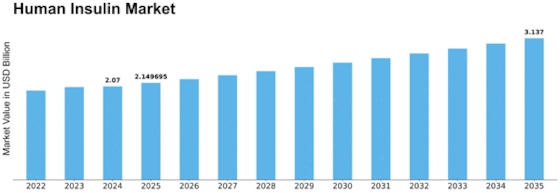

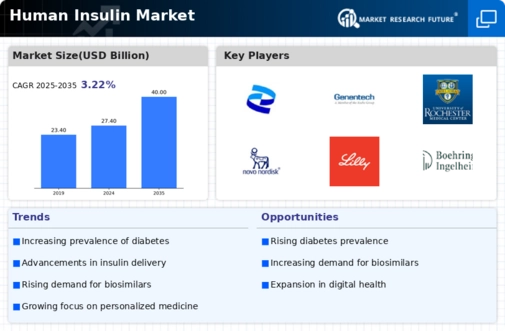
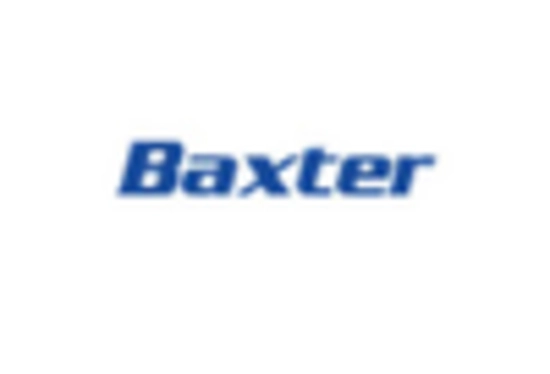


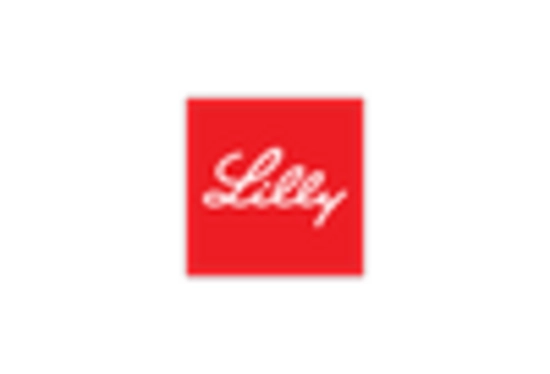
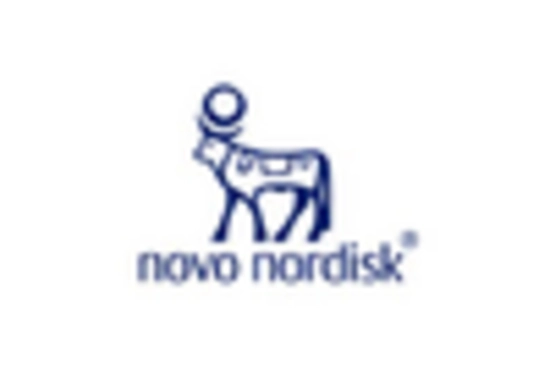
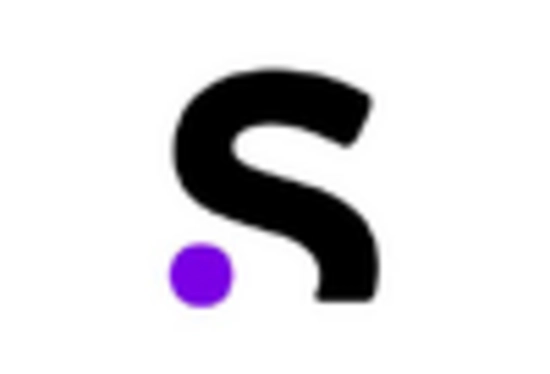









Leave a Comment